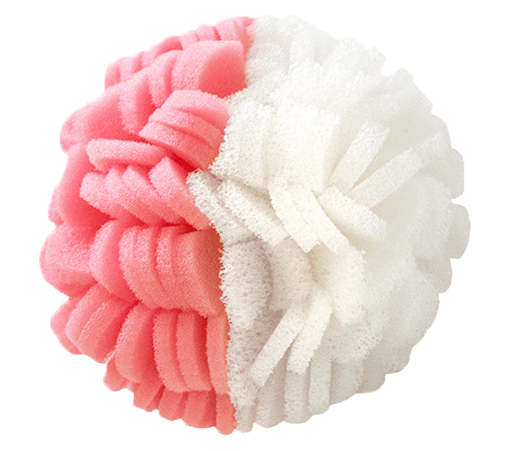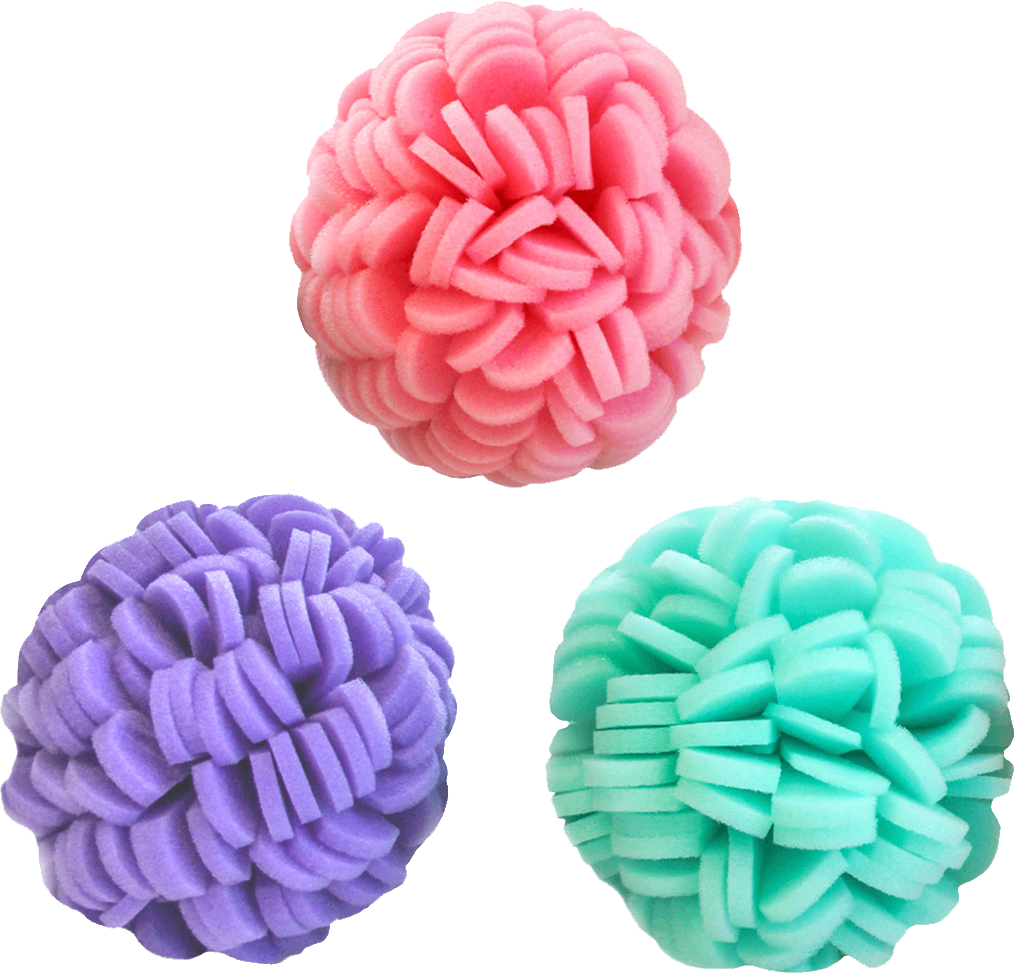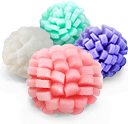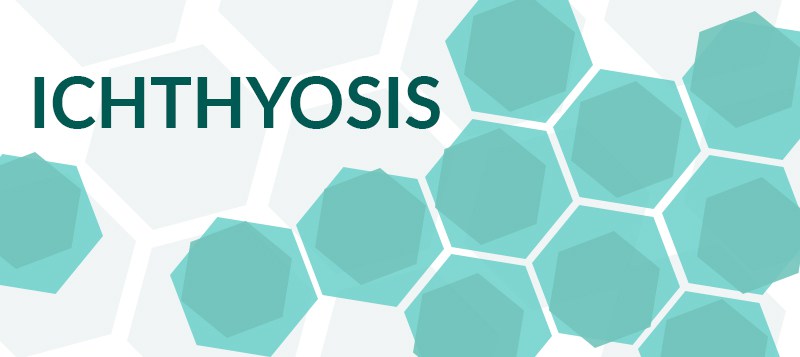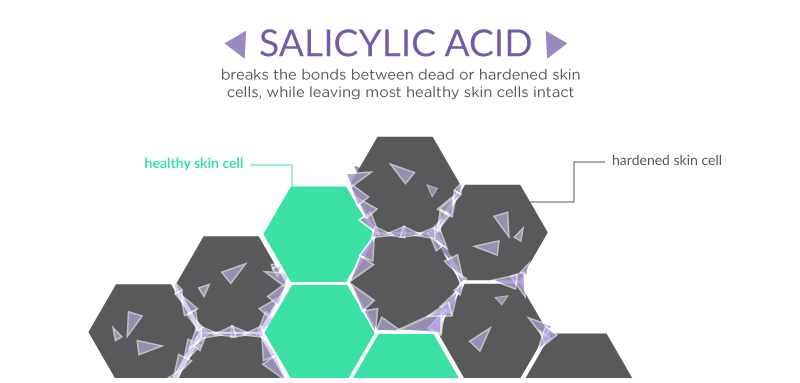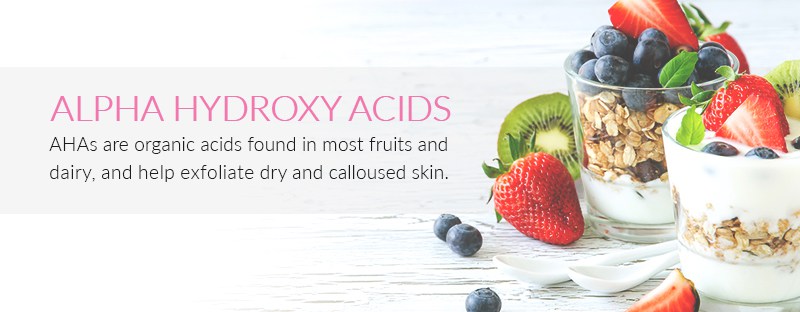One of our readers recently pointed out that those with ichthyosis, a condition characterized by continuous skin peeling and scaling, often have a difficult time picking out suitable exfoliating ingredients due to having exceptionally sensitive skin. Some readers who peruse the ViaBuff blog and read about “powerful” exfoliating ingredients may be a little turned off – nothing “powerful” should go on ichthyosis-ridden skin! So just what ingredients can you use to exfoliate your skin if you have ichthyosis?
Salicylic Acid: Suitable for Practically Every Skin Type
We know, we know – we talk about salicylic acid an awful lot on our blog, what with its being one of the best exfoliating ingredients in modern day dermatology. Salicylic is a keratolytic agent that works to remove dead and hardened skin cells from healthy skin cells by weakening their intercellular blonds, or the metaphorical “glue” that binds your skin cells together. But don’t worry – salicylic acid is concerned only with removing dead skin cells, and shouldn’t be a threat to the live, healthy cells that live beneath the stratum corneum. In fact, salicylic acid is believed to be an efficacious treatment for most conditions that are characterized by hardened, dead skin cells and peeling skin, including calluses, corns, ichthyosis, and psoriatic plaques. (Archives of Dermatological Research, Journal of the American Academy of Dermatology). If you need to be convinced of salicylic acid’s merits even further, consider this: even the Foundation for Ichthyosis and Related Skin Types, a leading authority on ichthyosis research and treatment, notes that topically-applied salicylic acid can be a boon for those with ichthyosis. However, regardless of what ingredient you choose to exfoliate your skin, it’s always best to discuss your options with a dermatologist and test the ingredient on a small patch of skin before applying it to larger sections of the body. Unless recommended otherwise by your dermatologist, is it best to avoid using salicylic-acid containing creams on babies and young children, as it may be irritating on their skin (Journal of the American Academy of Dermatology).
Urea Has Been Shown to Specifically Assist in Treating Ichthyosis
For those who are looking for a simple and straightforward ingredient to alleviate scaling from ichthyosis, then you may wish to consider using urea. In fact, a 2007 study published in the Journal of the American Academy of Dermatology noted that “urea is the most important active ingredient in ichthyosis therapy.” In a 2011 study published in Current Medical Research and Opinion, research suggested that 10% urea treatment was a well-tolerated and effective treatment for the scaling, roughness, redness, and cracking seen in those with ichthyosis vulgaris, with the urea treatment performing better than glycerol-based treatments ( a commonly-recommended ingredient to treat ichthyosis). Better yet, urea is generally well-tolerated and efficacious as a treatment for children with ichthyosis when used in concentrations as high as 10% (the highest concentration recommended (Dermatology). As if there was not enough to love about urea, research published in the Italian Journal of Dermatology and Venereology suggested that topically-applied urea can help to alleviate dryness and pruritus (itchiness), and is generally well-tolerated amongst users.
Alpha Hydroxy Acids Can Exfoliate the Skin Despite their Scary Name
Alpha hydroxy acids (AHA’s) sound menacing (who wants to put acid on their skin?!), but they are simply weak organic acids that you will find in many natural products, like milk and many fruits. For example, the AHA glycolic acid is often suggested to treat ichthyosis, due to its expertise at weakening corneocyte cohesion and expediting the exfoliative process (Acta Dermato Venereologica). Similarly, the AHA lactic acid is believed to further exfoliate hardened and calloused skin, with a study from the British Journal of Dermatology suggesting that a urea and lactic acid-containing treatment greatly reduced the thickness of ichthyosis scales. Ammonium lactate (derived from the AHA lactic acid) has received acclaim amongst those with ichthyosis both for its ability to improve the appearance of ichthyosis-ridden skin, its ability to partially hydrate the skin, and its low rate of irritability. For example, a case study published in the Journal of Clinical and Aesthetic Dermatology examined a 10-year-old boy who had a history of ichthyosis. After applying a 12% ammonium lactate cream twice a day for one month, his skin had improved to such a degree that the researchers noted that the patient “had essentially complete resolution of ichthyotic scaling and xerosis”.
Bottom Line
There is no known cure for ichthyosis, making it a rather painful and tedious condition to deal with throughout one’s life. While some users have found that designing their own specialty moisturizers and exfoliating serums to be of benefit, most sufferers of ichthyosis are likely to receive the most benefit by using pre-made products. Exfoliating ingredients that work particularly well on ichthyosis include salicylic acid, urea, and most AHAs. We would suggest using your favorite exfoliating scrub with a ViaBuff Exfoliating Buff, which can be customized to meet your skin’s needs. If you have any questions about this article our our buffs, feel free to send us an email!

